I don’t know about you, but there usually has to be a very good reason for me to justify the cost, time, and headache associated with renting a car. Rather than the hassle of dealing with parking, taking on the risk of driving a vehicle in a new location, and remembering to fill up on the way back, I tend to rely on public transit or rideshare services instead.
But a rental car was essential on a recent trip to Puerto Rico.
Without it, I wouldn’t have experienced some of the island’s wonders, like hiking to secluded waterfalls, paddling in a bioluminescent bay, or planting my toes in the sand while munching on alcapurrias. And those were the things I was flying all the way to Puerto Rico to do.
So with a small grumble, I booked a car.
Looking for more of the best of Puerto Rico? Find my guides all in one place.
While the island is a U.S. territory and there are many similarities to driving in any other destination, there are also a number of key differences, too. After renting a car and spending several days driving around the island, I’m ready to share my best tips for travelers who are considering driving in Puerto Rico. I’d like to think of this guide as the one I wish I had before I visited, but I’m glad I can pass my learnings onto you.
Well, what are you waiting for? ¡Vamos!
TIPS FOR RENTING A CAR AND DRIVING IN PUERTO RICO
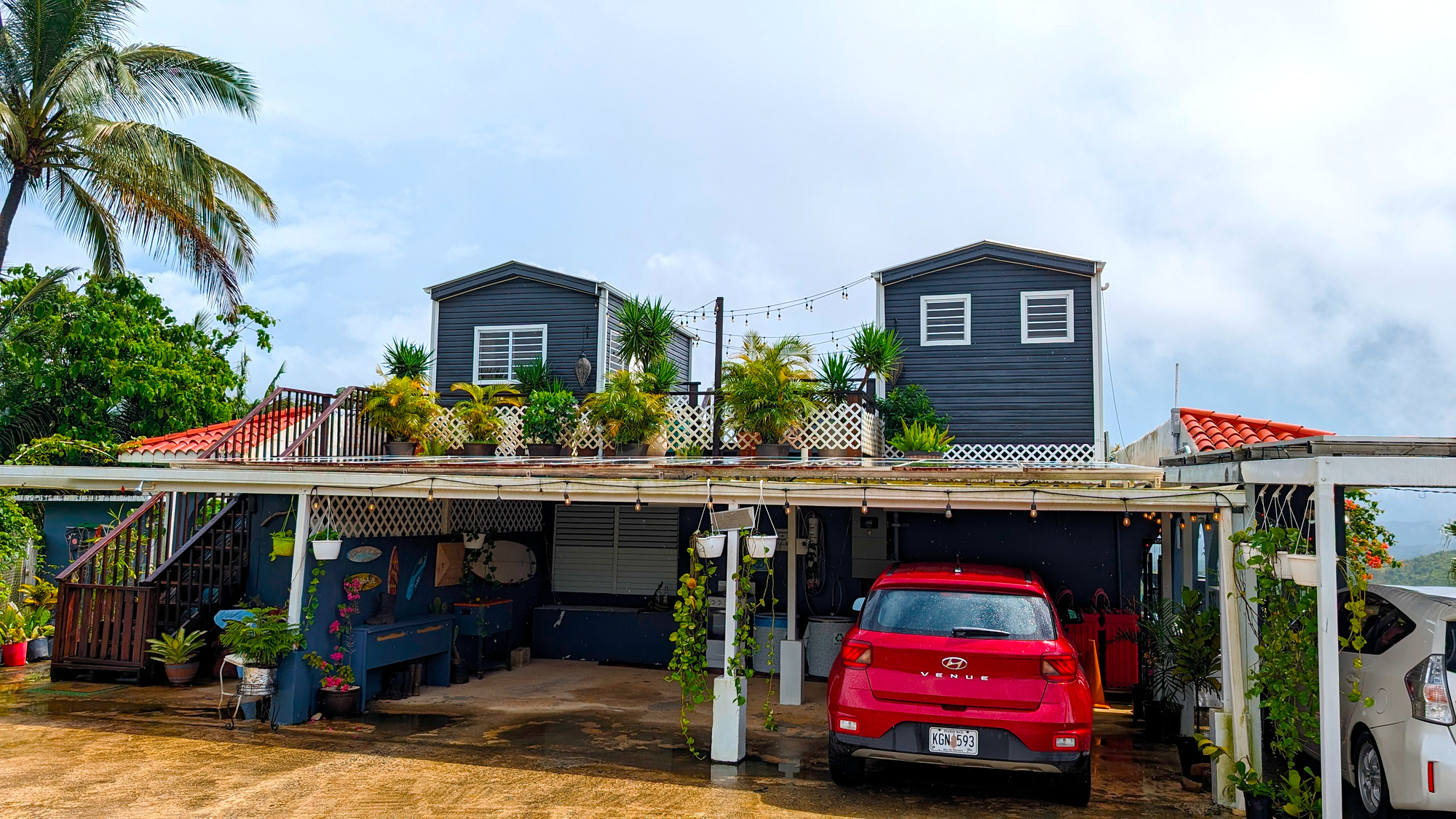
Decide if you really need one
Great news! If you’re staying in San Juan, a car isn’t necessary. Parking is a bit of a headache in the city (particularly in Old San Juan) and unless you’re zipping all over the city multiple times a day, you’ll probably end up saving money and time by using Uber instead.
If you want to get out and explore beyond the city, though, a car is essential. Sure, you might be able to find an Uber driver willing to bring you to El Yunque, but good luck getting back.
It’s similar to renting a car on the mainland
Just like renting a car in any other U.S. city, the same best practices apply here: book directly with the rental company, bring your valid driver’s license, and pay with your favorite travel credit card for extra protection.
Rent from the right place
After reading numerous reviews indicating a cockroach issue at multiple rental car vendors at the San Juan airport (seriously), we decided to rent from an off-airport location. Even if you’re renting a car in a different Puerto Rican city, check the reviews before booking to learn from past travelers. It’s a good way to learn if a particular rental car company has a reputation for overcharging or if they are honest and easy to work with.
Keep checking the rates
Once you’ve booked your car, you’re not quite done yet (at least, not if you enjoy saving money!). Many of the rental companies don’t require you to prepay, so you can cancel and rebook if the rates drop. In the weeks after booking, our car rental price dropped by $50, and at least in my household, that’s not chump change.
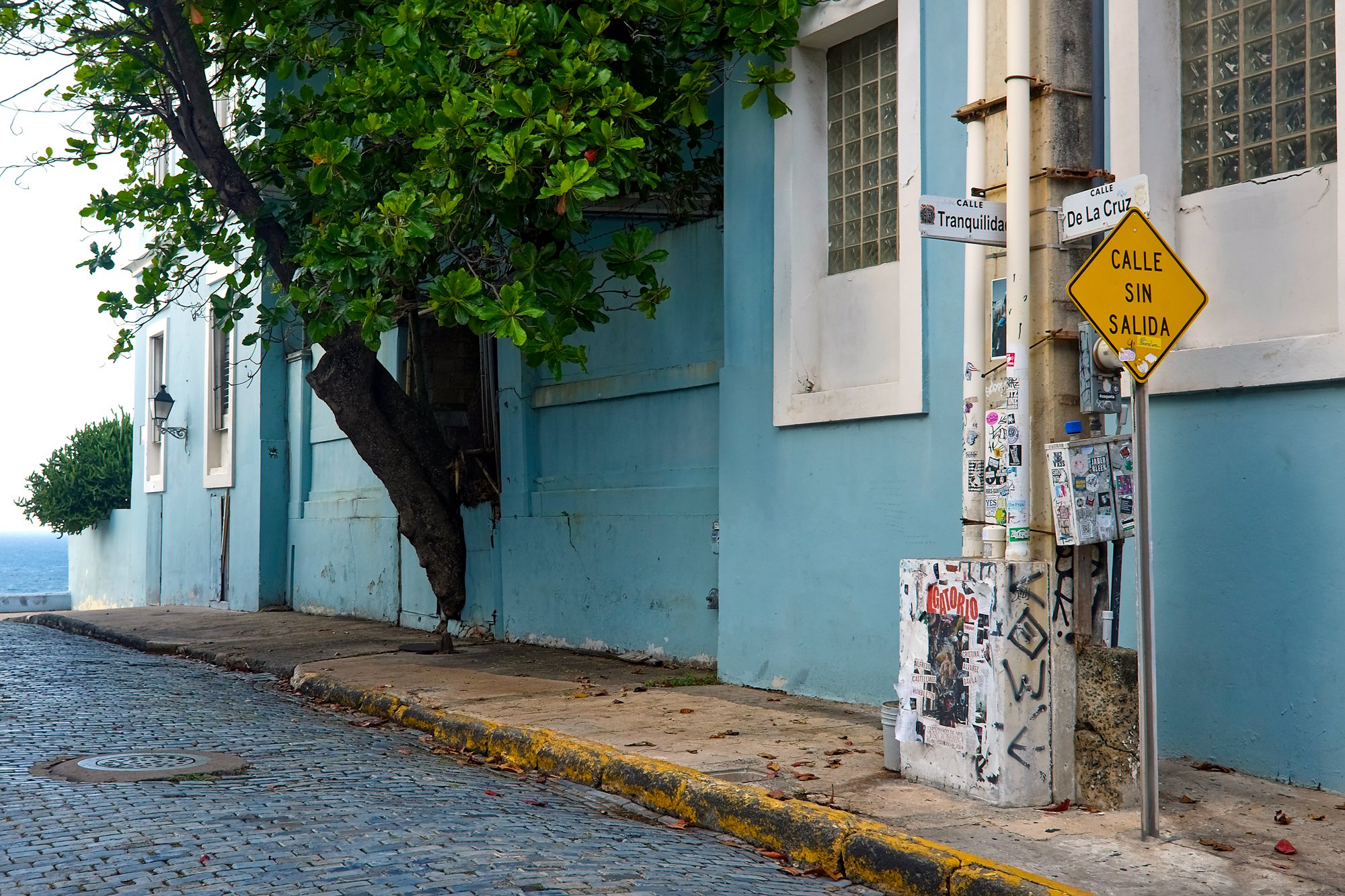
Puerto Rico’s street signs
Don’t speak Spanish? That’s okay! The street signs in Puerto Rico pretty much match the ones on the mainland in shape and meaning, just with Spanish words for context. For example, the octagonal red sign reading PARE still means STOP and the black and white arrow sign that says TRANSITO indicates a one-way street. The yellow diamond is still a warning sign, indicating a dead end in the example above.
One road sign that kept tripping us up was a yellow diamond with the word LOMO. After a little digging, we found out that it doesn’t mean pork loin in this context – it means “hill.”
Watch out for toll roads
Michael and I found navigating Puerto Rico’s roadways with Google Maps incredibly easy, except for one thing: toll roads. The names of the streets and roads didn’t necessarily align between the map and the street signs, leading us to miss the toll-free road and wind up having to pay a toll and the additional “convenience” fee from the rental car company at one point (which didn’t feel particularly convenient to me).
The takeaway? Designate one person in your group to be the navigator and direct the driver based on the route shown on the map – not the street names.
Drive predictably
Although there are occasionally cops around pulling people over (one of our Uber drivers was late picking us up in San Juan because he was pulled over for illegally changing lanes), for the most part, people drive however they please in Puerto Rico. You’ll see people weaving around cars left and right on the highway, speeding up and slowing down for no apparent reason, turning without indicating, and honking the horn like it’s their job.
This shouldn’t frighten you away from driving on the island, but it should serve as a reminder to be alert, be cautious, and drive predictably. Don’t panic and change lanes when you see a car weaving through traffic behind you – they’ll expect you to maintain speed in your location and move around you. This is true not just on the highway, but in the rural areas, too. We encountered several multi-lane roads without any lines to mark the lanes in small towns; my recommendation in this case is to just drive closer to the right shoulder.
While you may not see others use their turn signal, you should always use yours when turning or changing lanes. And keep an eye on the traffic lights; once that light turns green, drivers expect you to immediately proceed through the intersection (just see how quick locals are to beep at you – they have an incredibly quick response time!).

Parking can be a challenge
While some businesses will have a dedicated parking lot, most of the time, you’ll have to parallel park on the street. Standard driving laws would have you park in the direction of traffic, but it doesn’t seem to matter which side of the road you park on in Puerto Rico. People parallel park on the right or left, cutting across oncoming traffic to do so. Before leaving your car, check your surroundings to be sure you’re not parked on a yellow line, in front of a fire hydrant, or blocking someone’s driveway.
Michael and I managed to avoid paying for parking throughout our trip except for one place you might not expect: the beach. Though all beaches in Puerto Rico are free and open to the public, you may have to pay to park at the popular spots.
It’s going to be a little bumpy
Be prepared for potholes and unpaved roads, especially as you leave the highways for smaller towns and rural areas, so keep an eye out as you’re driving around. This is only compounded during the rainy season when those dips in the roads flood with water. As a reminder: never drive through any puddle you can’t see the bottom of.
A mix of measurements
Get this: in Puerto Rico, your driving distance is measured in kilometers, but speed limits are set in miles per hour. Pay extra careful attention to the speed limit signs, which are few and far between, so you don’t wind up with a speeding ticket as a souvenir. Unlike back home, where Google Maps displays the speed limit during navigation, you’ll have to rely on memory.
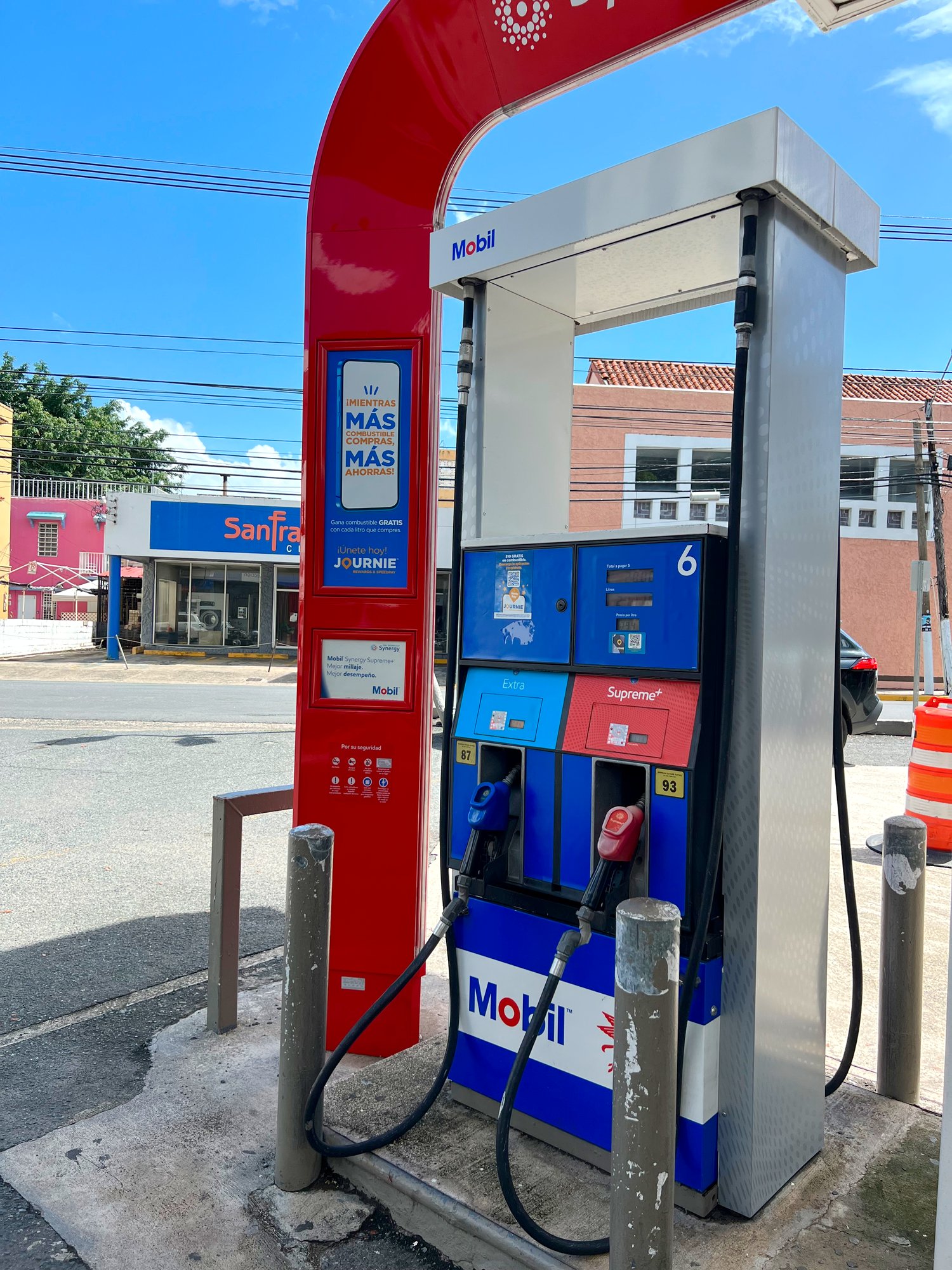
Getting gas is a little different
You probably know that you’ll need to return your rental car with a full tank (or at least you’ll need to match the fuel level when you drove off the lot), but getting gas in Puerto Rico is a little different than getting gas at home.
First of all, gas is dispensed in liters, not gallons, so while the price looks cheap on the sign (it was under $1 per unit for economy fuel) the total price is fairly comparable to what you may pay at home.
Once you enter the station and pull up to the pump (don’t forget to check which side of the car it’s on, especially if you wind up fueling up in one of the larger cities, which have narrower stations), you’ll discover there’s no way to pay at the pump. Instead, you’ll need to head inside to prepay.
But how much fuel do you request? You can ask to purchase a specific number of liters, pay a specific dollar amount, or let them know you’ll want to fill up. At the gas station we visited, Michael had to leave his ID and credit card with the attendant in order to fill the tank completely, but your mileage (or kilometers, in this case), may vary.
You can drive through a red light… in certain cases
Between the hours of midnight and 5 a.m., local laws allow you to treat red lights as a stop sign so you can get where you’re going quickly and safely. If you’re driving late at night, come to a full stop at a red light, check for cross traffic, and proceed when it’s safe to do so.
Take the slow route
While there may be times when you need to hurry off to your destination, treat your time driving around the island as part of your adventure. Driving in Puerto Rico is so much more than just a means to get to where you’re going – it offers a glimpse of local life beyond the tourist track. Take the backroads when you can, and opt for a different route on your way to and from a destination for a different view. You just may stumble on something new!
FINAL THOUGHTS ON RENTING A CAR IN PUERTO RICO

If you have more than a weekend on the island, I can’t recommend renting a car and setting out to explore enough. While there may be new challenges to navigate, there’s something incredibly empowering about moving freely and exploring a destination on your own. Not to mention, some of my fondest memories of Puerto Rico simply wouldn’t exist if we hadn’t opted to do so. From stumbling upon hidden beaches and charming roadside eateries to venturing into the lush interior of the island, the freedom of movement unlocks unforgettable experiences. So, don’t hesitate to grab a set of keys and pave the way for new adventures next time you’re in Puerto Rico.
—
Questions for you
Do you usually rent a car when you travel, or do you prefer to skip it?
Have you ever rented a car at a destination where they use a different language than your native one?
For locals – do you have any advice you would add to this list?
Enjoyed this post? You may also like:
- From Canopy to Coast: A Perfect Two-Night Rainforest and Beach Itinerary for Puerto Rico’s East Coast
- Weekend Escape: The Ultimate Guide for Your First Visit to San Juan, Puerto Rico
- Culinary Paradise: A Review of Marmalade in San Juan, Puerto Rico
- Checking In: A Review of Dream Inn in San Juan, Puerto Rico
- Checking In: A Review of El Colonial Hotel in San Juan, Puerto Rico
- Traveling Light: A Packing List for Five Nights in San Juan, Puerto Rico
- Four Days in St. Croix Travel Guide
- Traveling Light: St. Croix Packing List
- Travel Guide: Four Days in Cartagena, Colombia
- Rosario Islands Day Trip: A Review of Islabela Eco Resort
- Traveling Light: Cartagena, Colombia Packing List
- 13 Things You Should Know Before You Book a Flight with Avelo Airlines
- 14 Things You Should Know Before You Fly Frontier Airlines for the First Time
- 15 Things Travelers Should Know Before Flying Spirit Airlines for the First Time
- Travel Guides by Destination
- My Travel Essentials
- Shop My Closet
- Exclusive Discounts + Promo Codes
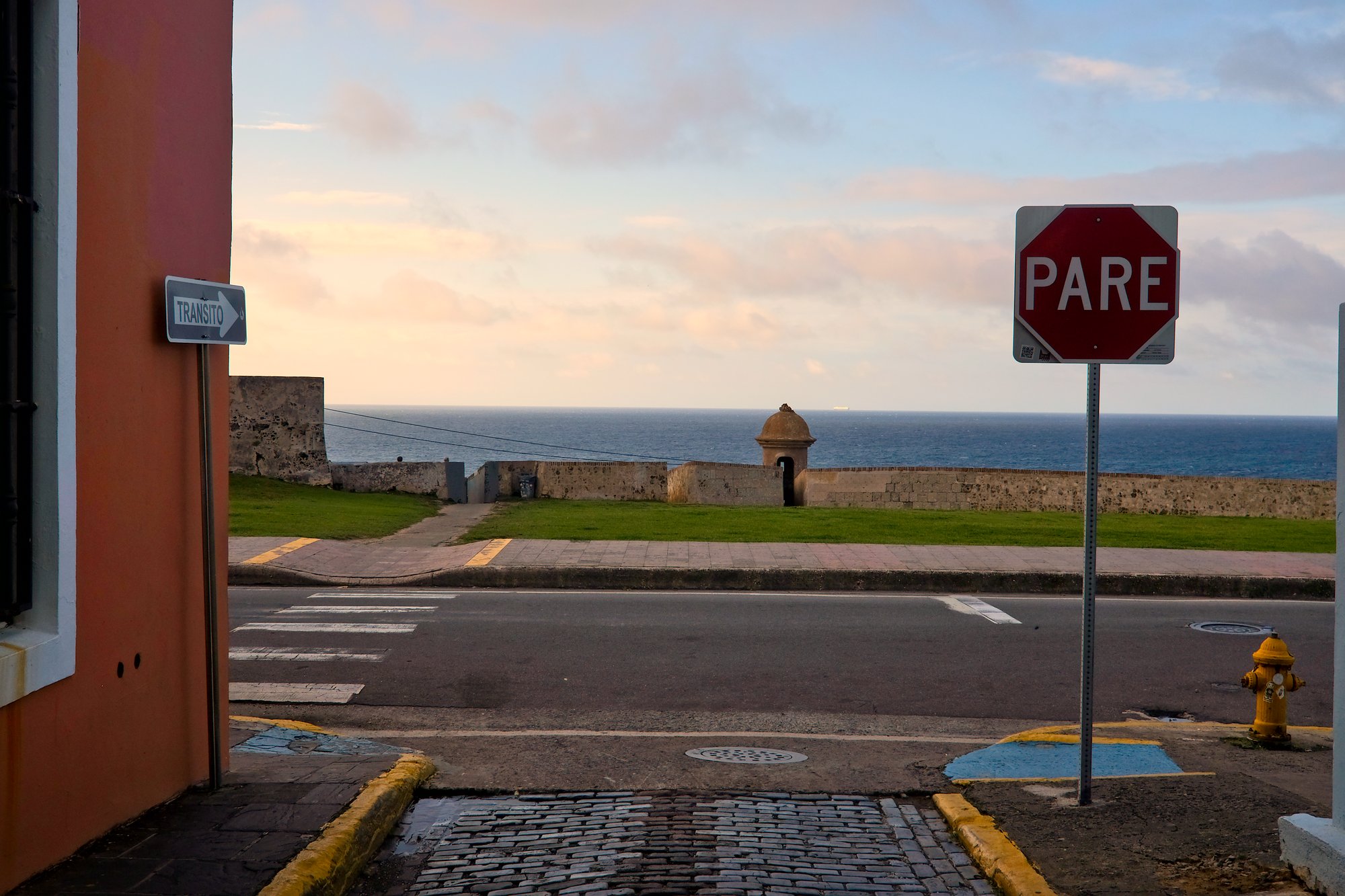
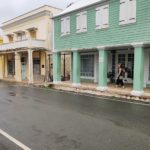
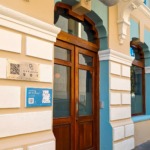

You really make me laugh. ? I live in Puerto Rico and is all true. We usually beep the horn to tell the other to move quickly before the light change, specially if we have a lot of traffic or we are late.
You forgot to mention if you miss your turn off just back up and take it. Yes I saw thus on the freeway!!! Lol along with a right turn from a left turn lane , I am sure they said pardon as they took it!!! Spent 4 yrs in PR with my spouses job. LOVED every minute of it the island and people stole my heart ❤️ and soul!!!
Lomo is not hill check your dictionary because they rip you off in translation . It means speed bump .
Calle sin Salida= dead end
Don’t forget insurance. Rental car insurance purchased from the rental car agency can be more expensive than the car rental itself.
To avoid this charge, check to see if your regular car insurance at home will cover your rental car. And don’t forget “loss of use” coverage. The car rental companies expect “loss of use” coverage while the rental car is being repaired.
In lieu of purchasing their extremely expensive insurance, expect a “hold” charge on your credit card. They will charge your credit card for any damage you may add to the car. Then you have to file a claim with your insurance company for reimbursement. A bit of a hassle in exchange for the saving accrued from not purchasing insurance from the rental company.
Remember to always take pictures or videos of your rented car before and after. They will charge your credit card after you get home. Let them inspect your car when returning so there are “no surprises” later. It happened to me.
Understandable , but you forgot to mention that what’s happened when the electricity came out and the traffic lights are not working, it’s a critical caos”????
Oh, I can only imagine!
Going to Puerto Rico for ten days. Should I rent a car or do I use Uber?
Without knowing your full itinerary, it’s a little hard to say – but I would highly, highly recommend renting a car and getting out of the city to explore for at least a few days of your trip. You won’t need a car if you’re spending time in San Juan (in fact a car is kind of a burden in San Juan), but anywhere else on the island, a car is an asset. Enjoy your trip!
Do not rent from car companies that are little known. Cheap car rentals,Pricetless Car rentals,etc, these companies will scam you.
Rent a car of course
Don’t use greenmotion rentals or popular auto rentals they will rip you off. I got a flat near toroverde and I called popular road side assistance they told me I was too far away and to try and flag down a passerby to help me. I had to fix the flat by myself on the side of the mountain road and then they charged me $150.00 for the flat. Both of those rental car places are thieves don’t use them.
Millisecond = time it takes the persond behind you at the light to hunk the horn when the light changes to green.
Sometimes I think people even beep before it turns green ?
They do. They do it as a heads up when the light is about to change to green. They don’t want you asleep when the light changes and stall everyone.
Try the same in New York City, I bet you get the horn before you get the green. Just saying
There is one more item to look out for. If you decide to rent a car in Puerto Rico, and you you want to pay for insurance ahead of time, ask if that company will accept it in Puerto Rico. I payed for insurance when I made a reservation up front. When went to pick up the car they insisted on paying for their insurance or else I couldn’t have the car.
Oh, wow – that is definitely something to keep an eye out for! Do you mind sharing which rental car company you used?
Priceless Car Rental,Thrifty Car rental, Sixt c. R.
Hertz, Enterprise, Alamo, do you recognize any of them?
I am surprised, After reading all the different car rental names that will rip you off. I thought that Hertz, Enterprise, & Almo were big companies with rules that they followed. So IT seems that there are no car companies that are good or honest. Do you know of any that are honest?
If you go rent a motorcycle
Besides drivers license, you need Proof of Auto Insurance. If not, you have to pay for the insurance the rental company offers.
“Off the beaten track” may mean mountain roads which tend to be narrow with lots of curves and not guardrails. Drive slowly as the locals know these roads and the don’t drive slowly!!! Blind curves and all.
Even better, stay away from the mountains completely and local areas
Having gone 4 times, I recommend the rental car.
Get the latest edition of the book ” Puerto Rico, Off The Beaten Path ” and map out what you want to visit.
Too many places are not publicized, for example, The Dry Forest, Coamo Hot Springs, El Túnel, where the waves are frequently good for surfing/body surfing.
If it’s a weekend or holiday, the locals might have the parks packed, so try during the week.
We once stayed a few days at a small place in Utuado in the mountains and made day trips from there. They served breakfast and supper.
Having a basic ability to communicate in Español will be a major asset outside the more populated areas, and frequently within the populated areas!
Also, the locals don’t stop for the red lights at night, so be very prepared for that.
DO NOT do this, most of these areas are not for tourists and you will have a hard time getting around.
What is body surfing? Is that when you use a boogie board? Where did you stay in Utaudo? How much did it cost for a day? Did they give a discount for a week or more? What is the address of the place you stayed at in Utaudo
One thing you forgot to mention is if you happen to venture into Jibaro territory like Utuado, Adjuntas, Jayuya, Ciales, Lares, and ask for directions their sense of direction of that ethnic group is totally different. They use nature markers and visual clues like Native Americans and their distances are minimize, specially deep in the mountains.